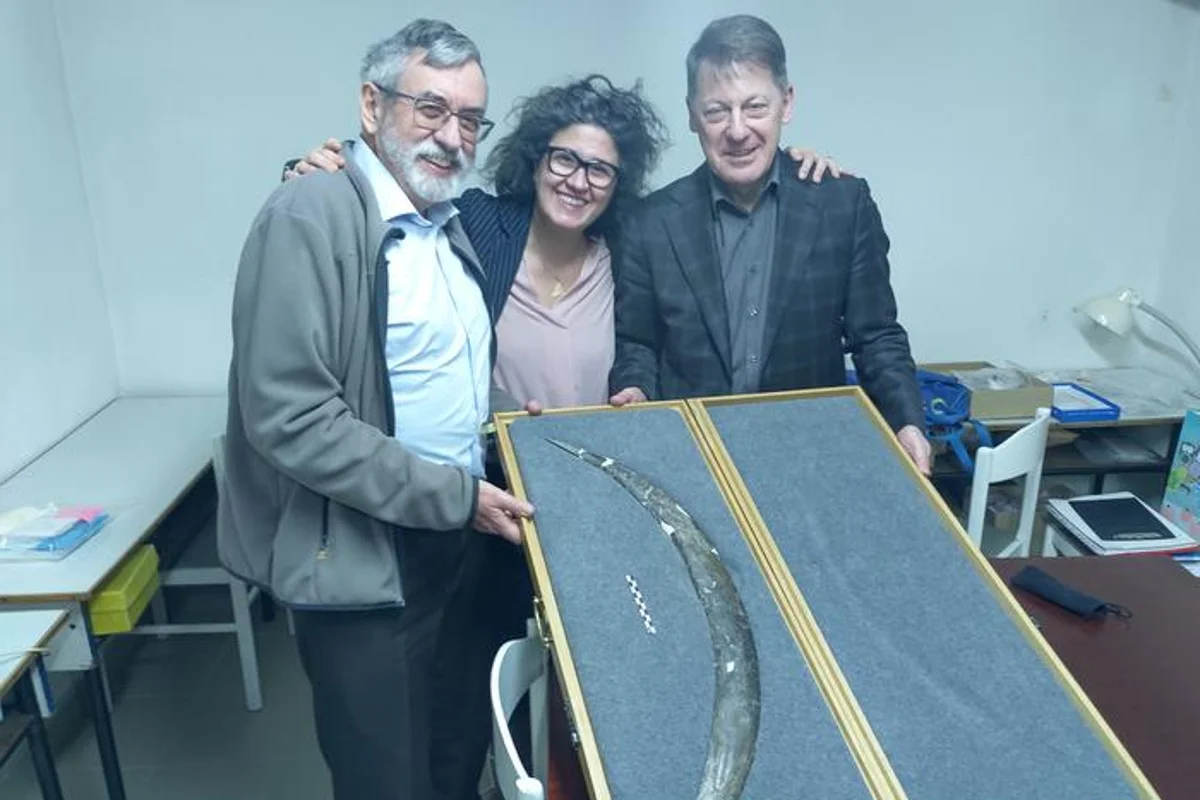
Archaeologists discover what could be world’s oldest boomerang in Europe
How did your country report this? Share your view in the comments.
Diverging Reports Breakdown
Archaeologists discover what could be world’s oldest boomerang in Europe
The tusk was found along with what seemed like a human little finger or toe bone fossil at the Obłazowa cave in Poland. It could be nearly 40,000 years old, according to a study published in the journal PLoS One. The previously oldest-known wooden boomerang came from the Wyrie Swamp in South Australia. It was dated to about 10,000 year ago. Most ancient boomerangs found so far, mostly in Australia, are typically made of wood. The new find made of ivory highlights the resourcefulness of our early Homo sapiens ancestors. It also underlines “an emerging regional artistic identity’ 40,00 years ago, researchers said. The findings offer insights into early human technological innovation, highlighting the creative solutions societies developed.
A mammoth tusk artefact discovered in a Polish cave could be Europe’s earliest example of a boomerang and even the oldest tool of its kind in the world, archaeologists said.
The tusk was found along with what seemed like a human little finger or toe bone fossil at the Obłazowa cave in Poland, and it could be nearly 40,000 years old, according to a study published in the journal PLoS One.
The previously oldest-known wooden boomerang came from the Wyrie Swamp in South Australia. It was dated to about 10,000 years ago, researchers, including from Jagiellonian University in Poland, said.
One of Europe’s earliest wooden throwing sticks was discovered at Schöningen in northern Germany and dated back about 300,000 years.
In southeastern Australia, prehistoric Aboriginal people employed several kinds of such curved sticks for hunting birds, fish and small mammals.
open image in gallery Researchers Paweł Valde-Nowak, left, Sahra Talamo and Adam Nadachowski pose with mammoth tusk boomerang ( Talamo et al via Eurekalert )
Several types of “non-returning boomerangs” have been found in central Australia as well. These were used for various tasks like “butchering animals, digging wells or cooking pits, scraping hot ashes from cooking carcasses, retouching stone weapons, and even producing musical sounds”. This shows the significance of boomerangs as versatile tools across diverse cultural and economic contexts.
While most ancient boomerangs found so far, mostly in Australia, are typically made of wood, the new find made of ivory highlights the resourcefulness of our early Homo sapiens ancestors.
Researchers found it to resemble “Queensland type of Australian boomerangs” with experiments hinting it could fly as a “non-returning boomerang”.
open image in gallery Boomerang made of mammoth tusk found in Obłazowa cave ( Talamo et al, 2025, PLOS One )
Markings on the boomerang provide cultural context critical for understanding the emergence and variability of symbolic behaviors among early Homo sapiens groups in Europe.
The discovery of the boomerang along with artefacts like a pendant also underlines “an emerging regional artistic identity” 40,000 years ago.
“This parallels the distinct regional traditions observed in Europe such as the ivory figurines and flutes of the Swabian Jura,” researchers said.
Archaeologists suspect the human digit fossil discovered along with the boomerang in the Obłazowa cave may be indicative of a shamanistic ritual.
“This interpretation draws parallels with rock art evidence of portrayed human hands with missing digits found in the Iberian Peninsula and France,” they said.
The findings offer insights into early human technological innovation, highlighting the creative solutions societies developed to suit their needs across time.
“The findings not only deepen our understanding of Homo sapiens’ adaptive strategies but highlight the nuanced interplay of technology, symbolism, and environmental interaction during the earliest phases of human dispersals in Central Europe,” the study concluded.
